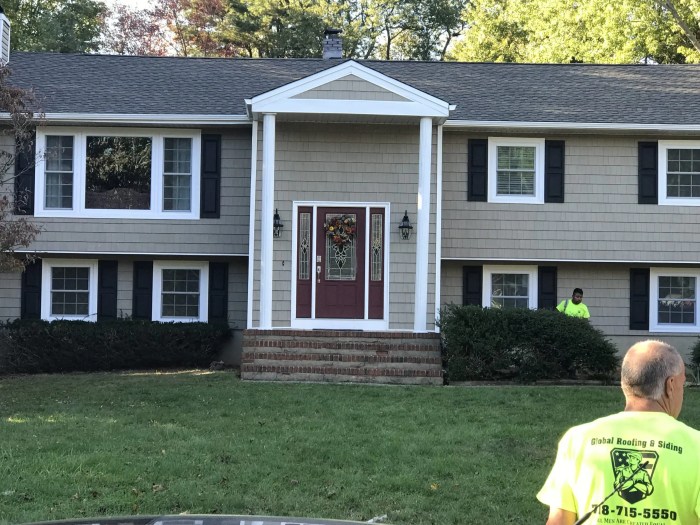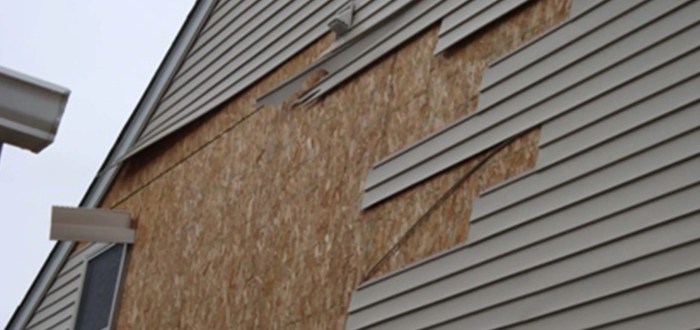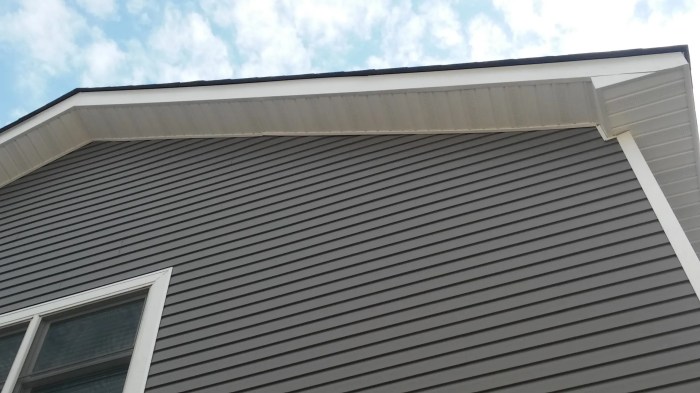As global siding and roofing takes center stage, this opening passage beckons readers into a world crafted with good knowledge, ensuring a reading experience that is both absorbing and distinctly original.
The global siding and roofing industry has a rich history intertwined with the evolution of construction practices. Let's delve into the key players and the industry's significance in shaping the modern architectural landscape.
Overview of Global Siding and Roofing Industry
The global siding and roofing industry has a rich history dating back to the early days of construction. As civilizations developed, the need for durable and weather-resistant materials to protect buildings became evident, leading to the evolution of various siding and roofing techniques.
Key players in the market include major manufacturers such as Owens Corning, CertainTeed Corporation, and GAF Materials Corporation. These companies specialize in producing a wide range of siding and roofing materials to meet the diverse needs of the construction industry.
The significance of the siding and roofing industry in the construction sector cannot be understated. Siding and roofing are essential components of any building, providing protection from the elements and enhancing the overall aesthetic appeal. As the construction industry continues to grow, the demand for high-quality siding and roofing materials is expected to rise, driving further innovation and development in the industry.
Types of Siding Materials
When it comes to siding materials, there are several options available globally, each with its own set of characteristics and benefits.
Vinyl Siding
- Vinyl siding is one of the most popular choices due to its affordability and low maintenance requirements.
- It is durable and can withstand harsh weather conditions, making it a long-lasting option for many homeowners.
- However, vinyl siding may not be as environmentally friendly as other options due to its plastic composition.
Fiber Cement Siding
- Fiber cement siding is a versatile material that mimics the look of wood or stucco but is more durable and resistant to insects and rot.
- It is a low-maintenance option that can last for decades, making it a popular choice for many homeowners.
- From an environmental standpoint, fiber cement siding is considered more eco-friendly than vinyl due to its composition of cement, sand, and cellulose fibers.
Wood Siding
- Wood siding offers a natural and timeless look that can enhance the aesthetic appeal of a home.
- While wood siding requires more maintenance than other materials, it can be a sustainable option if sourced from responsibly managed forests.
- However, wood siding is more prone to rot, insects, and moisture damage compared to other materials.
Aluminum Siding
- Aluminum siding is a lightweight and durable material that is resistant to fire and water damage.
- It requires minimal maintenance and can last for many years, making it a cost-effective option for homeowners.
- From an environmental perspective, aluminum is recyclable, but the production process can have negative impacts on the environment.
Roofing Systems Around the World

Roofing systems vary across different regions due to factors such as climate, architectural styles, and availability of materials. Let's explore some popular roofing systems used globally and the advancements in roofing technology.
North America
In North America, asphalt shingles are the most commonly used roofing material due to their affordability, durability, and ease of installation. Metal roofing systems are also popular for their longevity and energy efficiency.
Europe
In Europe, clay and concrete tiles are commonly used for roofing due to their durability and aesthetic appeal. Green roofs, which involve growing vegetation on the roof surface, are also gaining popularity for their environmental benefits.
Asia
In Asia, materials like bamboo, thatch, and metal are commonly used for roofing. Thatch roofs are popular in tropical regions for their natural insulation properties, while metal roofs are preferred in areas prone to typhoons and earthquakes for their strength.
Africa
In Africa, thatch roofs made from materials like palm leaves or grass are common due to their availability and affordability. Corrugated metal roofing is also used in many African countries for its durability and resistance to extreme weather conditions.
Factors Influencing Roofing Systems
- Climate: Roofing materials are selected based on the climate of the region to ensure durability and energy efficiency.
- Architectural Style: The architectural design of buildings influences the choice of roofing materials to complement the overall look.
- Cultural Influence: Local traditions and preferences play a role in determining the type of roofing system used in a particular region.
Advancements in Roofing Technology
- Solar Roofing: Integration of solar panels into roofing materials to generate renewable energy.
- Cool Roofing: Reflective roofing materials that reduce heat absorption and energy consumption.
- Smart Roofing: Technologies that monitor and control the temperature and ventilation of roofs for improved energy efficiency.
Sustainable Practices in Siding and Roofing

When it comes to the siding and roofing industry, sustainable practices play a crucial role in reducing environmental impact and promoting eco-friendly solutions. By utilizing green initiatives and eco-friendly materials, companies can contribute to a more sustainable future while also reaping various benefits.
Benefits of Using Eco-Friendly Materials
Using eco-friendly materials for siding and roofing can have a significant positive impact on both the environment and the building occupants. Some of the key benefits include:
- Reduced carbon footprint: Eco-friendly materials typically have lower emissions during production and installation, helping to reduce overall carbon footprint.
- Energy efficiency: Green materials often provide better insulation, leading to improved energy efficiency and lower utility bills.
- Improved indoor air quality: Non-toxic materials contribute to better indoor air quality, promoting a healthier living environment.
- Longevity and durability: Sustainable materials are often more durable and long-lasting, reducing the need for frequent replacements and maintenance.
Examples of Green Initiatives by Leading Companies
Many leading companies in the siding and roofing industry have taken proactive steps towards sustainability through various green initiatives. Some examples include:
- Recycling programs: Companies have implemented recycling programs to reduce waste and promote the reuse of materials.
- Solar panel integration: Incorporating solar panels into roofing systems to harness renewable energy and reduce dependence on traditional power sources.
- Water conservation efforts: Implementing water-saving technologies and practices to minimize water usage during manufacturing and installation processes.
- LEED certification: Pursuing LEED certification for buildings to ensure they meet high standards of sustainability and environmental responsibility.
Global Market Trends and Forecast
The global siding and roofing market is constantly evolving, driven by various trends that shape the industry. Let's take a closer look at the current market trends and growth projections for the future.
Smart Technologies Integration
With the rise of smart homes and sustainable building practices, there is a growing demand for siding and roofing materials that integrate smart technologies. These materials are designed to improve energy efficiency, monitor environmental conditions, and enhance overall building performance.
As technology continues to advance, we can expect to see more innovative solutions in the market.
Increase in Eco-Friendly Options
As consumers become more environmentally conscious, there is a noticeable shift towards eco-friendly siding and roofing materials. Sustainable practices such as recycling, using renewable resources, and reducing waste are becoming key factors in the decision-making process. This trend is expected to drive the market towards more sustainable and eco-friendly solutions in the coming years.
Rise in Extreme Weather Events
With the increase in extreme weather events around the world, there is a growing need for durable and resilient siding and roofing systems. Builders and homeowners are looking for materials that can withstand harsh weather conditions such as hurricanes, tornadoes, and heavy snowfall.
This trend is likely to influence the market towards more robust and weather-resistant products.
Market Growth Projections
According to industry reports, the global siding and roofing market is projected to grow at a steady pace in the coming years. Factors such as urbanization, infrastructure development, and increased construction activities are expected to drive market expansion. Additionally, advancements in technology and the growing focus on sustainability are likely to fuel further growth in the industry.
Final Conclusion

In conclusion, the global siding and roofing sector continues to thrive with innovation and sustainability at its core. From sustainable practices to market trends, this industry is poised for dynamic growth and evolution in the coming years.
Essential Questionnaire
What are some common siding materials used globally?
Common siding materials include vinyl, wood, fiber cement, metal, and brick.
How do different siding materials compare in terms of durability?
Vinyl and fiber cement are known for their durability, while wood may require more maintenance over time.
What are some popular roofing systems used around the world?
Popular roofing systems include asphalt shingles, metal roofing, clay tiles, and green roofs.
Why are sustainable practices important in the siding and roofing industry?
Sustainable practices help reduce environmental impact, improve energy efficiency, and promote long-term building durability.
What are some current market trends shaping the global siding and roofing industry?
Current trends include a shift towards eco-friendly materials, increased focus on energy efficiency, and the adoption of innovative roofing technologies.